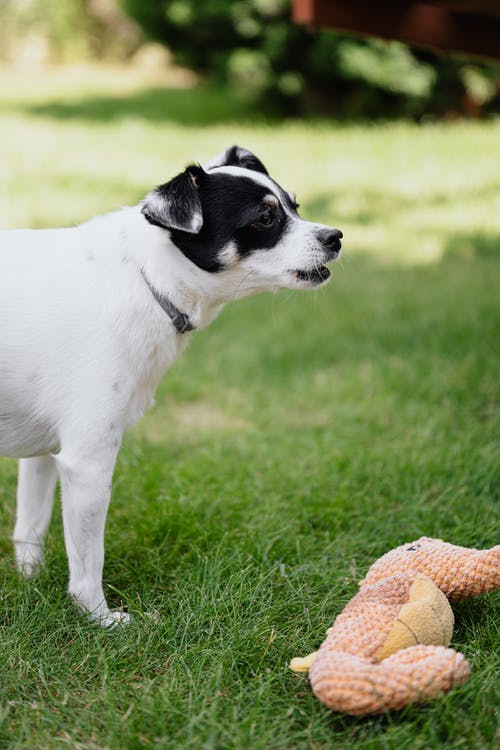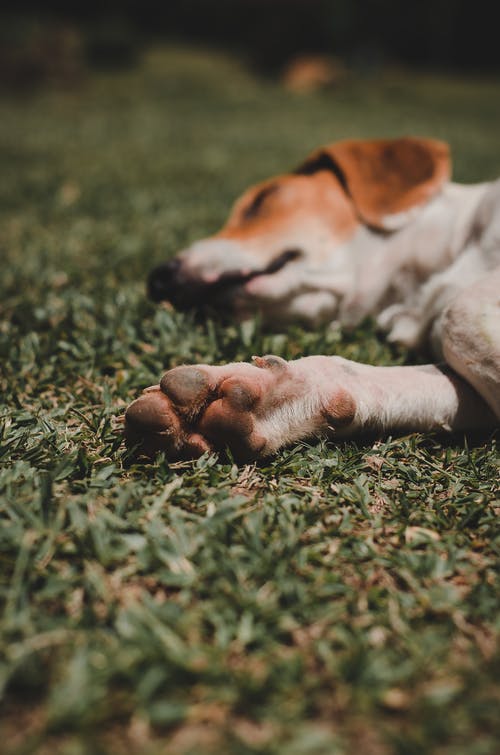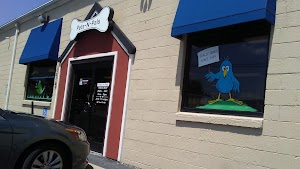Archive for August, 2022
-
How To Stop Your Fur-Legged Friend from Barking at Strangers
We love our dogs a lot as they provide us with a lot of joy, but excessive barking can be very difficult to handle, especially on a daily basis. Many dogs will naturally begin to bark when they see someone they do not recognize. Although this is a good thing in some instances, in most, it is unnecessary and annoying. The repeated sound of a barking dog will also eventually annoy neighbors and could land you in hot water with your local authorities. So how do you teach your dog not to bark at strangers?
Why do dogs bark at people they do not know?
First, let’s look at why dogs bark at people in general. The most common reasons are:
General excitement bark: Simply said, dogs are excited to see and interact with new people! Most dogs are very social creatures, and when approached by someone new, they are eager to meet and interact with them. To determine if the barking is excited-based, look at their tail. A highly energetic and wagging tail typically means a happy and excited dog.
Territorial bark: Many dogs are territorial of their home, property, and family. Some dogs view a stranger as someone who is not authorized to be at their home and or as a potential threat to the family living there. The territorial bark is used to warn the stranger to stay away. It is also used to alert the dog’s family that a possible intruder is approaching for safety.
Lack of socialization bark: Dogs that have not been raised in social environments tend not to know what to do when a new face is observed. Barking is a natural reaction in dogs, and this behavior may take place by default. Allow your dog to socialize with other people and pets, which will help him to better accept new people. Fear bark: Your dog may have just been alarmed! Even dogs that are properly socialized and who are not overly territorial can be alarmed and begin to bark. Dogs are designed, for the most part, to be alert and to guard. This can happen to even the most laidback pup, who will bark when scared.

How To Stop The Unwanted Behavior
Do not overreact to their barking. Dogs that bark for attention know their barking is effective when they get a reaction from their human family. Like a child who acts a certain way when he or she needs attention, dogs do too. Limiting your reaction will allow your pup to see that his barking will not result in any attention.
Walk Away
When you walk away from a dog, he recognizes there is no reward. When he barks at someone and you walk away, he may begin to associate the excessive barking with something he should not do. Paying too much attention to the negative behavior may end up making it worse.
Distracting Them
On the flip side, some dogs need a distraction in order to take away their focus on what is causing them to bark. If your dog begins to bark, simply distract them with noise. This can be accomplished by shaking your keys, slapping your hands, whistling, or using one of his favorite squeaky toys. If this is effective, he should be rewarded, which will associate positive behavior with a reward.
Need To Remember You should not forget that your dog is a dog. Dogs do bark and do get excited for various reasons. It is in their DNA! Being patient with your dog is needed in all instances. Although excessive barking can be a nuisance, keeping cool and not overreacting is a great first step in managing it. Your dog can tell when you are stressed, so a calm and patient demeanor with him is what will yield the best results.
-
How To Handle Broken Nails on Our Puppies
Our pups love to play and, at times, can play hard. A very common injury for our pups is a split or broken toenail. These can cause pain and great discomfort to our fur-legged friends, and knowing what to do when this happens is very important. Although a very simple injury, it is one that should be treated quickly and properly.
What Causes Dogs’ Nails to Break?
Dogs have a total of nine toes. Five toes on their front paws and four on their back paws. Their nails grow throughout their entire life and often require trimming to keep them at a comfortable length. Overgrown toenails on dogs can cause discomfort since they are in constant contact with the ground they walk on. We need to remember that they are not just walking on a soft carpet. Outdoor terrain can be hard and rough, which can cause their nails to break and or split. Imagine how you would feel running around outside without shoes on.
Why are a Dog’s Broken Nails Problematic?
Our pup’s toenails should always be taken seriously, as damaged toenails can lead to greater health issues. The injury is not only painful but can limit their mobility and quality of life. Inside their nails are clusters of nerves and blood vessels. An untreated broken toenail can lead to an infection that is capable of spreading into the dog’s leg, which will require much greater medical care. This is one of the main reasons why tending to his toenails is so important.

How To Treat A Broken a Nail
When in doubt, contacting your veterinarian is always recommended. If you treat the injured toenail at home, you should initially restrain your dog in a way that allows you to safely examine the injured toenail. This will help prevent you from being bit and or scratched and will make the process safer and easier. Your pup will be in pain and most likely not want you near the injured paw. If your dog’s nail is bleeding and he will allow you to touch the area, begin to address the bleeding by applying light pressure to the area. Keep the light pressure applied for several minutes and until the bleeding stops. After the bleeding is under control, apply an anti-bacterial ointment or cleansing solution to the injured area. Bleeding that does not stop after fifteen minutes should be looked at by a veterinarian. After the area is properly cleaned, allow it to air dry. Applying a bandage over the area may not allow it to dry out as desired and is a potential safety hazard should your dog try and chew the bandage. If you happen to observe a small section of the nail hanging from the area, you can attempt to remove it yourself by carefully trimming it. This should only be done if your dog is tolerating the pain and relaxed enough to allow you to. After doing so, let your dog time to relax before allowing him to run free, especially outside.
How Long Does It Take a Dog to Fully Recover from A Broken Toenail? Although all dogs are different and all injuries vary, generally speaking, your dog will need about two weeks before his nail is completely back to normal. You should start seeing improvement within the first 48 to 72 hours. This will greatly depend on how quickly you treated the injury, the overall extent of the injury, and if your dog did not reinjure it before it began to heal. Remembering to use anti-bacterial ointments or cleansing solutions as soon as possible also helps to prevent the area from becoming infected, which can certainly set back your pup’s recovery time.




